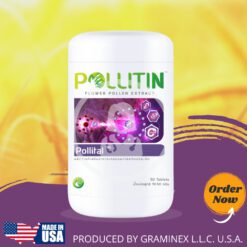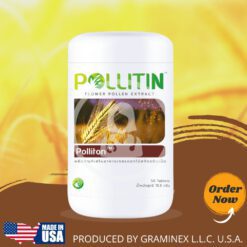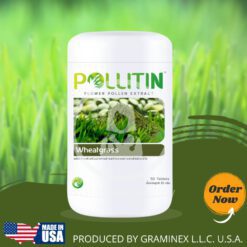Ingredient
Vitamin A
What is Vitamin A?
Vitamin A is a vital nutrient that plays a crucial role in maintaining various physiological functions within the human body. Chemically, it is classified as a fat-soluble vitamin, which means it dissolves in fats and oils, allowing for its storage in the liver and fatty tissues. This distinctive characteristic enables the body to draw on its reserves when dietary intake may be insufficient. Vitamin A encompasses a group of compounds, including retinol, retinal, and retinoic acid, which are considered biologically active forms of the vitamin.
The significance of vitamin A cannot be overstated, as it is integral to several fundamental processes. It is best known for its contribution to maintaining healthy vision; the vitamin is a key component in the formation of rhodopsin, a protein in the retina that aids in low-light and color vision. Beyond its ocular benefits, vitamin A also plays a crucial role in supporting the immune system. It is instrumental in promoting the development and differentiation of immune cells, helping the body to fend off infections more efficiently.
Furthermore, vitamin A is essential for cellular growth and development. It influences various biological activities, including embryonic development and maintenance of skin health by promoting cell turnover. Additionally, it is involved in the synthesis of glycoproteins, which are necessary for cell communication and signaling processes. The role of vitamin A extends to antioxidant properties as well, protecting cells from oxidative stress caused by free radicals.
Given its multifaceted roles in the body, it is evident why vitamin A is considered an essential nutrient. A deficiency can result in a range of health issues, including vision problems, weakened immunity, and compromised skin and mucous membrane integrity. Therefore, understanding its importance is paramount for maintaining overall well-being.
Types of Vitamin A
Vitamin A exists in several forms, each contributing uniquely to human health. The primary forms include retinol, retinal, and retinoic acid, collectively known as preformed vitamin A. Retinol, often referred to as vitamin A1, is found primarily in animal-based foods such as liver, fish, eggs, and dairy products. This form is readily utilized by the body and plays a crucial role in maintaining healthy vision, skin, and immune function.
Retinal, another significant form, is involved in the phototransduction process in the retina. It works in tandem with proteins known as opsins to facilitate vision under low-light conditions. The conversion of retinal back to retinol is critical for sustaining the levels of vitamin A in the body and ensuring continuous visual function.
Retinoic acid, the oxidized form of retinal, is vital for gene expression and cellular differentiation. It acts on the gene level to influence processes such as growth, immune response, and skin health. Importantly, retinoic acid cannot be converted back to retinol, which underscores its unique role in the body’s vitamin A utilization.
In addition to these preformed types, vitamin A can also be sourced from carotenoids, which are plant-based pigments. Beta-carotene is the most notable carotenoid, found abundantly in colorful fruits and vegetables such as carrots, sweet potatoes, spinach, and apricots. The body can convert beta-carotene into retinol when needed, providing flexibility in obtaining this essential nutrient through diet.
These various forms of vitamin A play distinct yet interconnected roles in health, highlighting the importance of a balanced diet that includes both animal and plant sources to meet the body’s vitamin A requirements effectively.
Functions of Vitamin A
Vitamin A plays a pivotal role in several essential bodily functions, profoundly influencing various aspects of health. One of its most recognized contributions is to vision. Retinal, a derivative of vitamin A, is crucial for the formation of rhodopsin, a pigment found in the retina that is necessary for low-light and color vision. Studies have demonstrated that vitamin A deficiency can lead to night blindness and, in severe cases, total vision loss. This highlights the necessity of adequate vitamin A intake for maintaining healthy eyesight.
In addition to its impact on vision, vitamin A is integral to the functioning of the immune system. It helps to promote the development and differentiation of white blood cells, which are vital for combating infections. Research has shown that individuals with a deficiency in vitamin A exhibit increased susceptibility to infectious diseases, indicating that this nutrient is a major player in immune health.
Skin health is another area where vitamin A exerts significant influence. It aids in the maintenance and repair of skin tissues by promoting cell turnover and enhancing the skin’s barrier function. Retinoids, which are vitamin A derivatives, are often utilized in dermatology for treating acne and other skin conditions, as they help regulate the shedding of dead skin cells and prevent the clogging of pores.
Furthermore, vitamin A is essential for reproductive health through its role in the development of sperm in men and the maintenance of a healthy pregnancy in women. It has been observed that adequate vitamin A levels are necessary for fetal development and successful reproduction.
Lastly, vitamin A is crucial for cellular communication and the proper functioning of epithelial tissues, which line the surfaces of organs and structures throughout the body. Its diverse functions underscore the importance of ensuring sufficient intake as part of a balanced diet.
Sources of Vitamin A
Vitamin A is an essential nutrient crucial for maintaining various bodily functions, including vision, immune health, and skin integrity. It can be obtained from both animal and plant sources, each contributing different forms of Vitamin A. The two primary forms are retinol, which is found in animal products, and provitamin A carotenoids, which are present in many fruits and vegetables.
An abundant source of retinol can be found in liver, which is particularly rich in this vitamin. For those who may not consume liver, dairy products such as milk, cheese, and yogurt also offer significant amounts of Vitamin A. Fish, particularly cod liver oil, is another excellent source. Eggs also contain a good amount of retinol, making them a versatile addition to many diets. These animal sources provide Vitamin A in a form that is readily utilized by the body.
On the plant side, carotenoids serve as precursors to retinol. Foods high in carotenoids include carrots, sweet potatoes, and butternut squash, all of which are known for their vibrant orange and yellow colors. Leafy greens, such as spinach, kale, and collard greens, are also rich in these pigments and provide a substantial amount of Vitamin A when consumed regularly. Other fruits like cantaloupe and apricots add to the variety of ways one can receive this vital nutrient from plant sources.
The recommended daily intake of Vitamin A varies depending on age, sex, and life stage, but generally, adult men require about 900 micrograms of retinol activity equivalents (RAE) daily, while adult women need around 700 micrograms RAE. Integrating a mix of both animal and plant sources into a balanced diet can help individuals meet these requirements while enjoying a diverse array of flavors and textures in their meals.
Vitamin A Deficiency
Vitamin A deficiency is a global health issue that can have significant consequences for individuals across various populations. This deficiency arises primarily from inadequate dietary intake, malabsorption issues, or specific health conditions that impair the synthesis of this vital nutrient. Vegetarians, infants, and pregnant or breastfeeding women may experience increased susceptibility to Vitamin A deficiency due to their dietary restrictions or increased nutritional needs.
The symptoms of Vitamin A deficiency can manifest in several ways, with night blindness being one of the earliest indicators. This condition occurs when the eyes struggle to adjust from bright light to darkness due to insufficient levels of retinal, a form of Vitamin A essential for vision. Furthermore, prolonged deficiency can lead to more severe complications, including xerophthalmia, which can ultimately result in blindness if left untreated. In addition to ocular symptoms, Vitamin A deficiency compromises the immune system, rendering individuals more susceptible to infections such as measles and respiratory diseases.
Identifying Vitamin A deficiency is crucial, especially for at-risk groups. Individuals with a limited intake of animal-derived foods, such as retinol-rich liver and dairy products, may lack adequate Vitamin A. Children who are weaned onto a diet low in Vitamin A can also be at heightened risk. Health professionals may assess dietary habits, perform clinical evaluations, and, in some cases, recommend serum retinol testing to determine the vitamin’s status in the body. Understanding the signs of inadequacy allows for timely intervention, which can include dietary adjustments or supplementation to restore optimal Vitamin A levels, thus preventing the detrimental health effects caused by its deficiency.
Vitamin A Toxicity
Vitamin A plays a crucial role in multiple bodily functions, including maintaining healthy vision, immune system performance, and skin health. However, excessive intake of this fat-soluble vitamin can lead to toxicity, which poses significant health risks. Vitamin A toxicity typically results from consuming high doses of supplements or fortified foods rather than through dietary sources alone. The body has a remarkable ability to regulate vitamin A from food, making it generally safe when obtained from natural sources such as fruits, vegetables, and animal products.
The symptoms of vitamin A toxicity can vary widely, often presenting as headaches, dizziness, nausea, and even blurred vision. In more severe cases, individuals might experience liver damage, bone pain, or a condition known as intracranial hypertension, characterized by increased pressure within the skull. The risk of developing toxicity is particularly heightened in pregnant women, as excessive vitamin A can lead to congenital disabilities in developing fetuses.
Given the potential risks associated with high intake levels of vitamin A, moderation is key. Health experts recommend that adults do not exceed the tolerable upper intake level (UL) of 3,000 micrograms of preformed vitamin A (retinol) per day. It is essential to be cautious when integrating vitamin A supplements into one’s daily routine, particularly for individuals who may already consume vitamin A-rich foods. Consulting healthcare professionals for personalized advice on supplementation is highly advisable, especially for those with underlying health conditions or specific dietary needs.
In conclusion, while vitamin A is vital for overall health, understanding the implications of excessive intake is essential. Awareness of the signs of toxicity can help mitigate risks while still allowing individuals to benefit from this essential nutrient when consumed in appropriate amounts.
Health Benefits of Vitamin A
Vitamin A is an essential nutrient that plays a critical role in various bodily functions, contributing to overall health and well-being. One of the most notable benefits of adequate vitamin A intake is its profound impact on eye health. This vitamin is integral to the formation of rhodopsin, a protein in the eyes that allows for vision in low light conditions. Deficiency in vitamin A can lead to night blindness and increased susceptibility to various eye disorders. Regular consumption of vitamin A-rich foods can help protect against these conditions, supporting optimal vision.
Moreover, vitamin A is known to aid in skin health. It promotes cellular communication and helps maintain the skin’s structural integrity. This vitamin facilitates the production of new skin cells while promoting the shedding of dead cells. Consequently, adequate vitamin A levels can improve skin tone, reduce the appearance of fine lines, and even assist in managing acne. Various studies have suggested that topical vitamin A derivatives may effectively treat skin issues, highlighting its importance in dermatological health.
Another significant benefit is the potential role of vitamin A in cancer prevention. Research indicates that diets rich in this vitamin may lower the risk of certain cancers, including lung and prostate cancers. The antioxidant properties of vitamin A help combat oxidative stress and inflammation, both of which can contribute to the development of cancerous cells. Expert opinions advocate for the consumption of fruits and vegetables high in beta-carotene, which the body converts to vitamin A, emphasizing their protective effects against various diseases.
In summary, vitamin A serves multiple health benefits, from supporting vision and skin condition to potentially reducing cancer risk. Ensuring adequate intake of this vital nutrient is essential for maintaining overall health and mitigating potential disease risks.
Vitamin A in Different Age Groups
Vitamin A is an essential nutrient that plays a crucial role in various physiological functions, including vision, immune system performance, and cellular communication. The requirements for Vitamin A differ significantly across various age groups and life stages, reflecting the distinct nutritional needs of each demographic.
For infants, Vitamin A is vital for proper growth and development. The recommended dietary allowance (RDA) for infants aged 0-6 months is 400 micrograms (mcg) of retinol activity equivalents (RAE) per day. As they progress to 7-12 months, the requirement increases to 500 mcg RAE daily. This nutrient is predominantly obtained from breast milk or fortified formulas, making it essential for breastfeeding mothers to maintain adequate Vitamin A levels.
Children aged 1-3 years require about 300 mcg RAE daily, while those between 4-8 years need approximately 400 mcg RAE. Incorporating a variety of fruits and vegetables, particularly orange and green leafy options like carrots and spinach, can help meet these needs. The adolescent group, specifically those aged 9-13 years, has an increased RDA of 600 mcg RAE, highlighting the growing body during these formative years.
For adults, the RDA stabilizes to 900 mcg RAE for men and 700 mcg RAE for women. However, special considerations must be made for pregnant and lactating women, as their Vitamin A needs are greater. Pregnant women should aim for 770 mcg RAE daily to support fetal development, while lactating women require around 1,300 mcg RAE to ensure adequate nutrients are passed through breast milk.
Thus, understanding these varying requirements is essential for age-appropriate nutritional guidance and for ensuring optimal health through adequate Vitamin A intake throughout the lifespan.
Conclusion
In conclusion, maintaining a balanced intake of Vitamin A is crucial for optimal health and wellness. This essential nutrient plays a vital role in various bodily functions, including vision, immune system performance, and skin health. Throughout the blog post, we have examined the importance of Vitamin A, the different sources available, and its numerous benefits. Understanding these aspects can empower individuals to make informed dietary choices that support their overall well-being.
It is important to note that Vitamin A comes in two primary forms: preformed Vitamin A, found in animal products, and provitamin A carotenoids, which are abundant in fruits and vegetables. A balanced diet that incorporates both forms can help ensure adequate Vitamin A levels in the body. However, excessive intake of this vitamin, particularly from supplements, can lead to toxicity. Therefore, it is essential to find a middle ground that meets one’s nutritional needs without overconsumption.
Integrating diverse food sources, such as leafy greens, orange and yellow fruits, and whole dairy products, can significantly contribute to an adequate intake of Vitamin A. This diversity not only aids in obtaining the nutrient but also supports a varied diet that promotes overall health. As individual dietary needs can differ and may be influenced by factors such as age, gender, or existing health conditions, it is advisable to consult with healthcare professionals for tailored dietary guidance.
By recognizing the significance of Vitamin A and ensuring a balanced approach to its consumption, individuals can enhance their health and prevent deficiencies that may lead to adverse effects. A conscious effort towards a nutritious and well-rounded diet is a step towards achieving long-term wellness.







Recommended Products
Colla Mixed Pollitin Graminex Pollen Extract
Liver Cancer Economical Health Care Set
Cancer Health Care Set1
Tumor Health Care Set